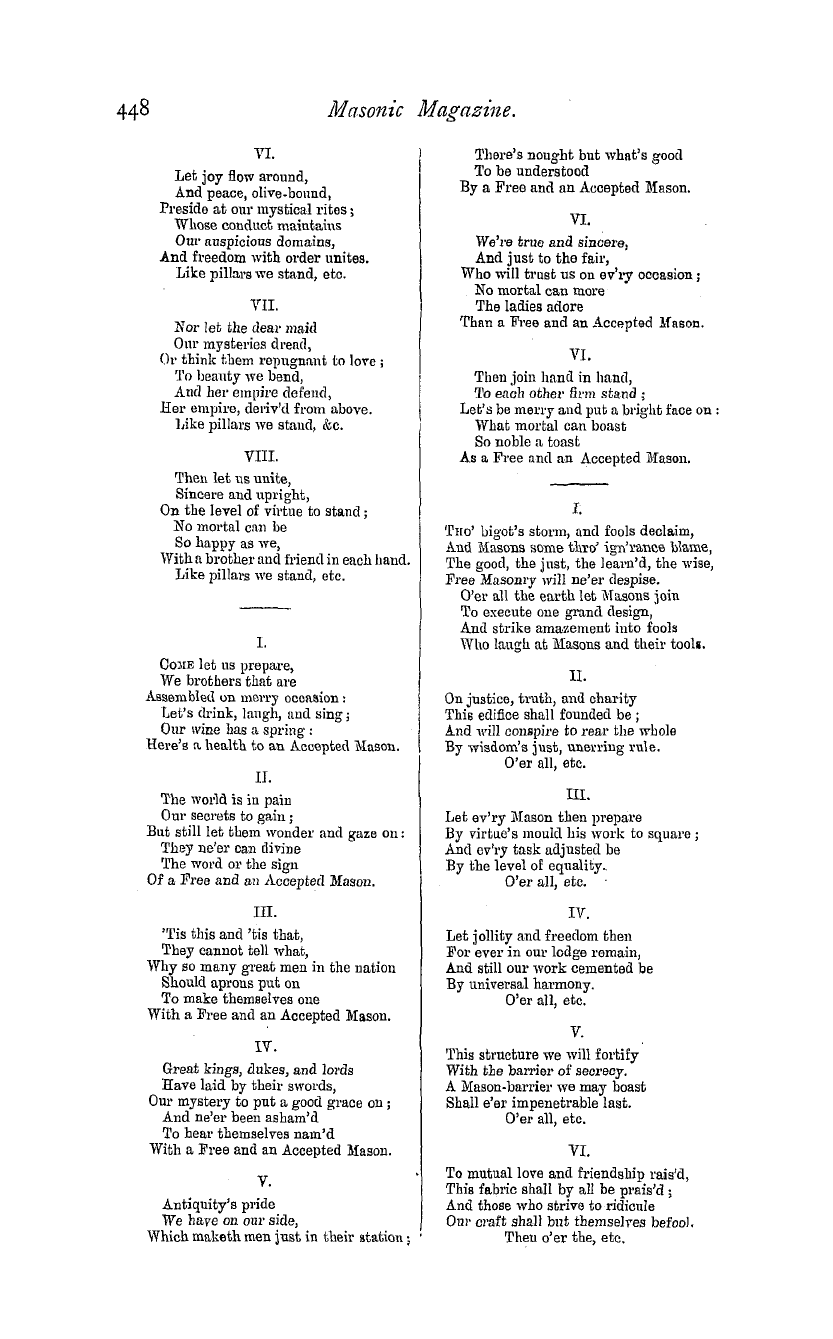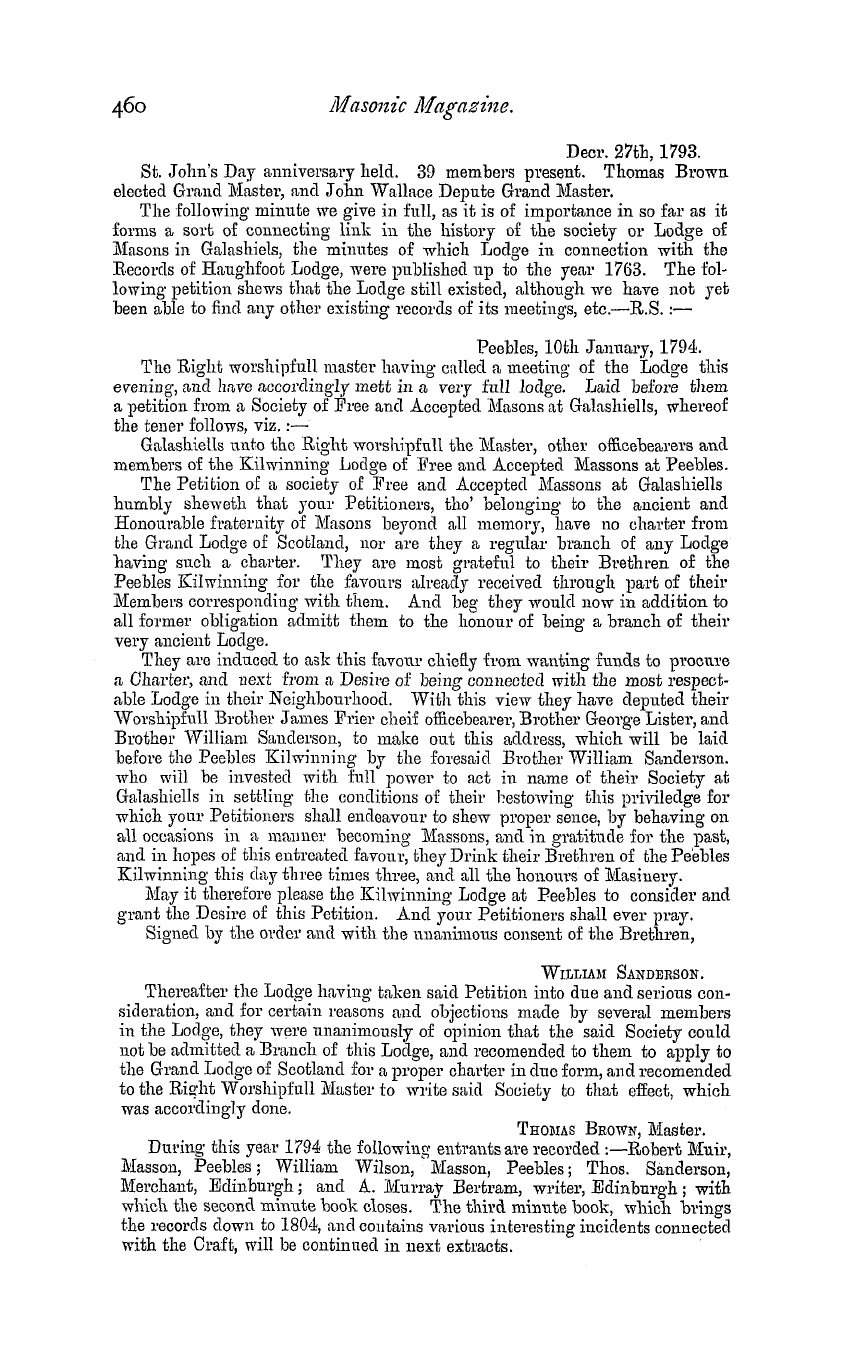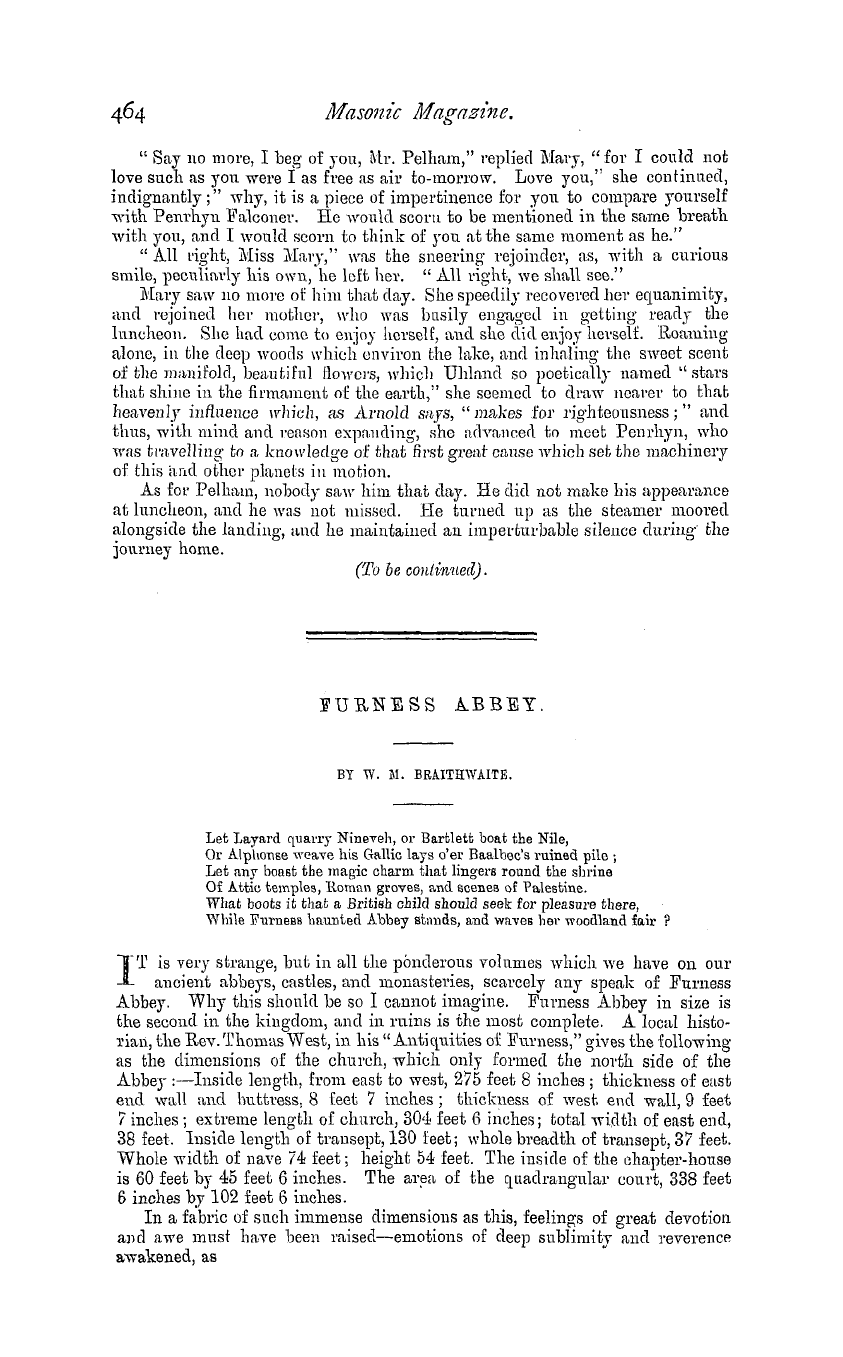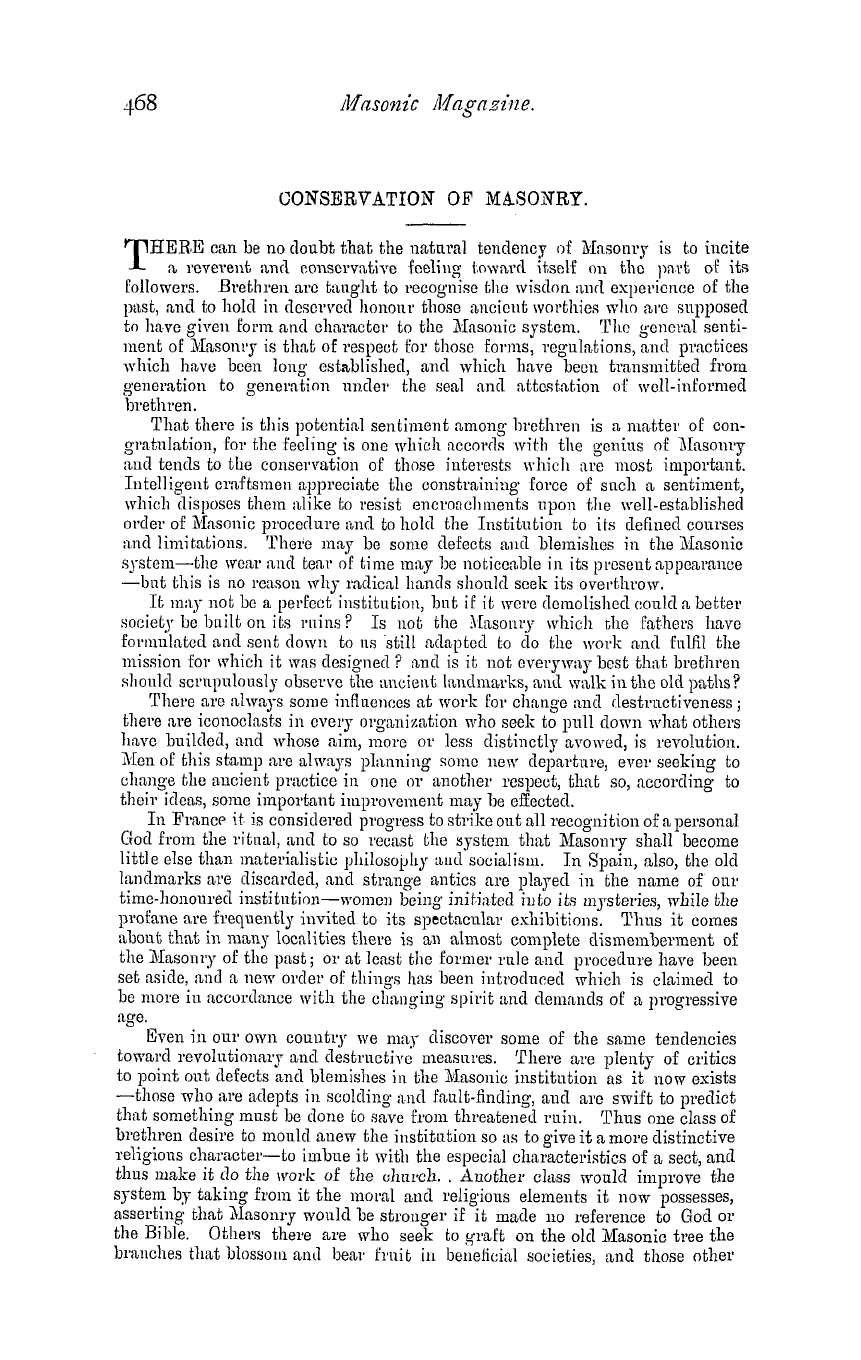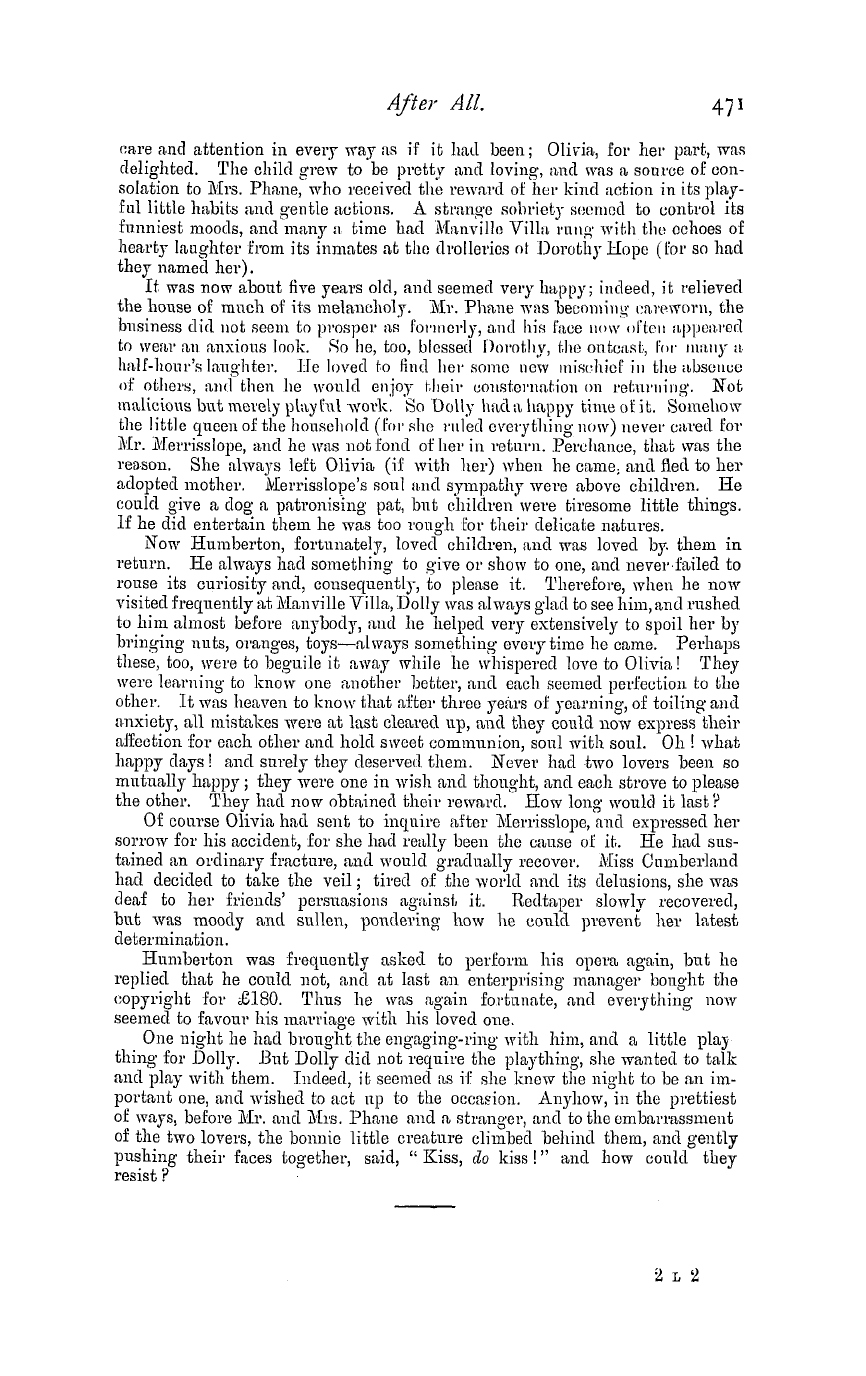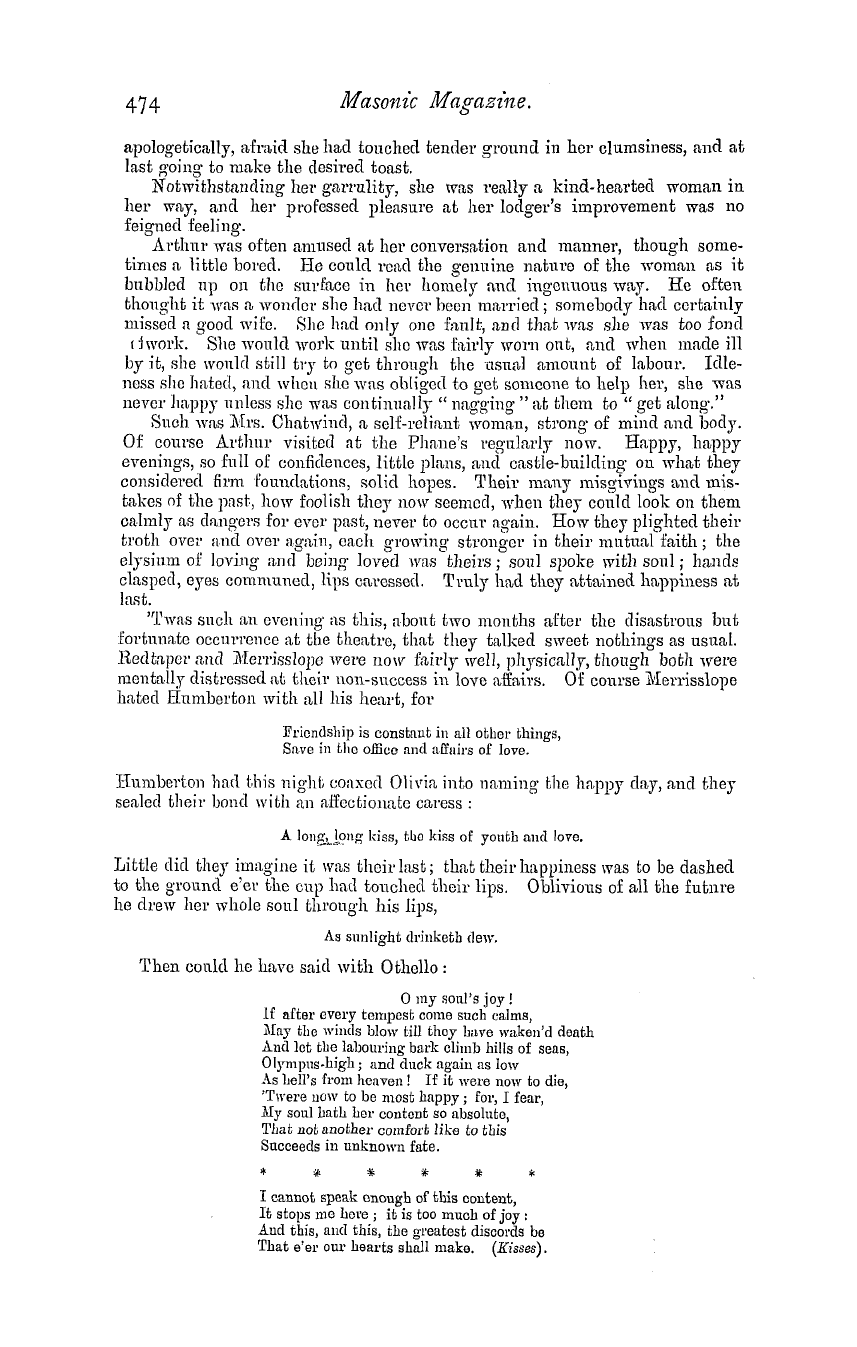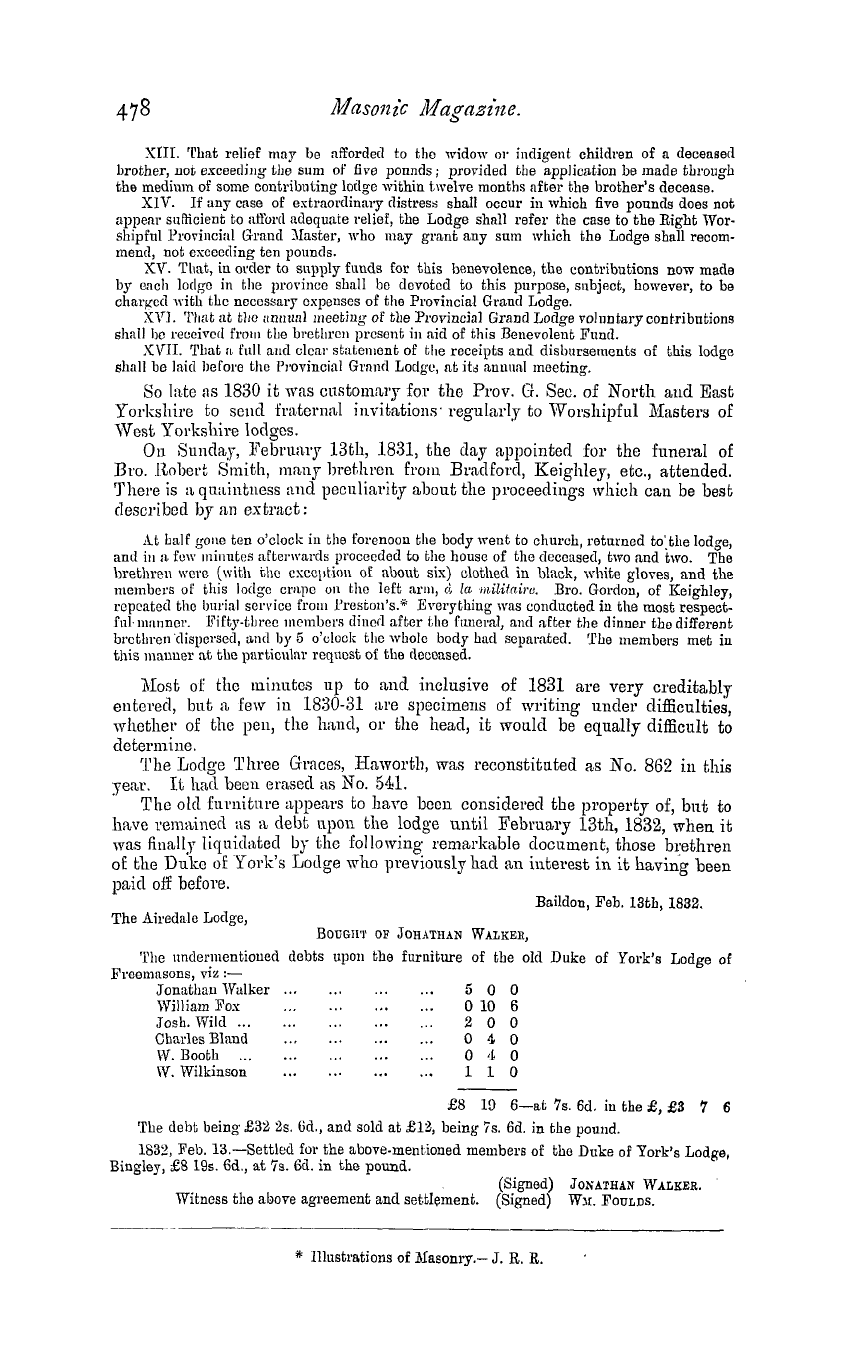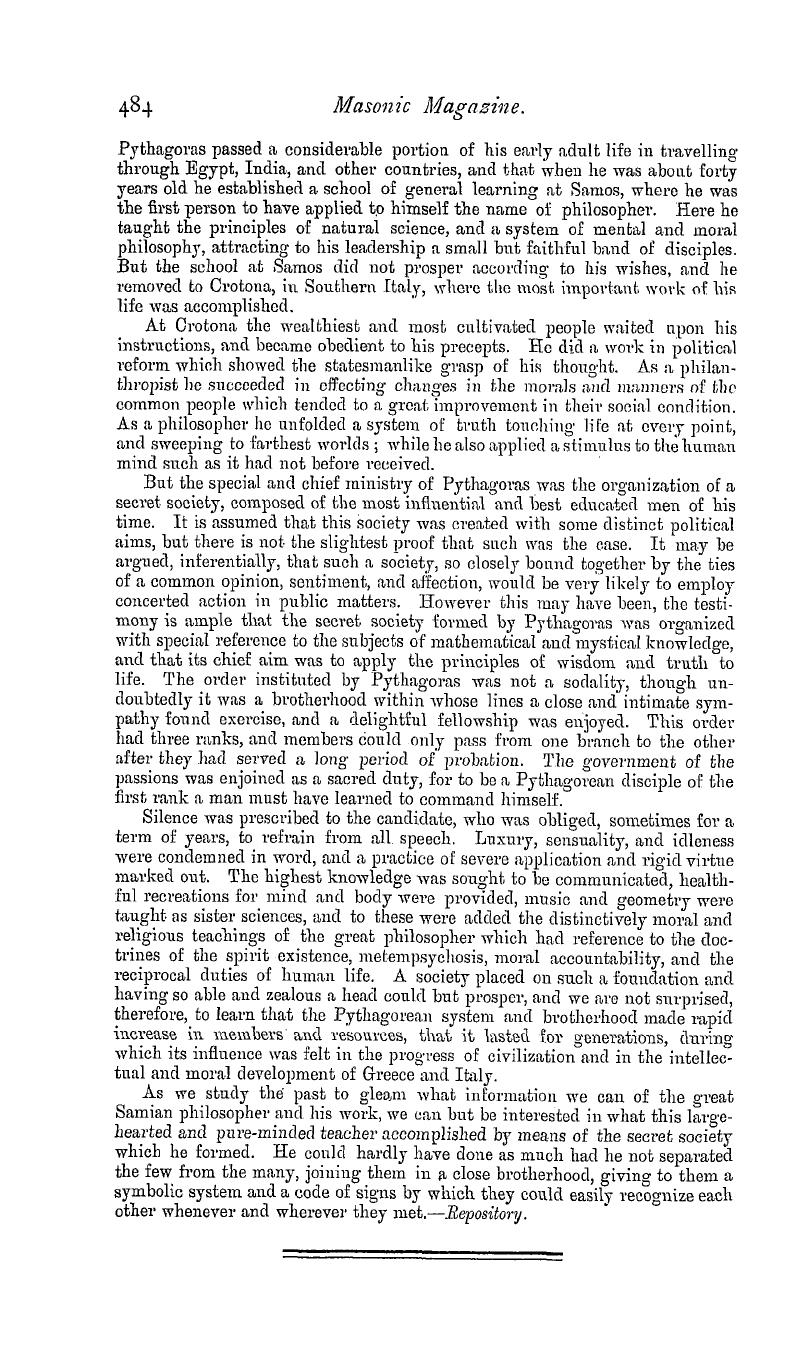Note: This text has been automatically extracted via Optical Character Recognition (OCR) software.
The Present Position Of Masonic History And Criticism.
THE PRESENT POSITION OF MASONIC HISTORY AND CRITICISM .
BY THE EDITOR , No . II . I PROPOSE in this paper to consider the MS . evidence we have at present available with respect to the history of Freemasonry . As regards the " guild legends" little need be saidbecausethough they exist from the
, , , beginning of the fifteenth century , or even the end of the fourteenth according to some , they are to a certain extent " out of court " for the purposes of this enquiry ancl discussion . " Non constat , " say the upholders of the 1717 theory , that though they undoubtedly exist , and as undoubtedly belonged to the operative guilds , they have anything to do with the speculative Masons of 1717 ; ancl as I desire to use no debateable propositions , I simply confine myself
to what may be called " ritual evidence , " whether friendly or hostile matters nothing for the purpose of my argument . Even the hostile evidences being fictitious , according to Paley ' s well-known argument , would prove the genuine to have existed , and therefore we may assume safel y that a genuine form of Masonry existed , for instance , in 1730 , of which Pritchard was the foolish ancl untrustworthy assailant . A good deal of stress is often laid on
" rituals " per se , but I have always failed , I confess , to see the cogency or value of any such argument . At the best it would be but quasi evidence , being oral ancl traditional altogether , and unless we adopt the adage of the " schoolmen" and apply it to Masonic ceremonial , " Lex orandi , lex credendi , " I certainly fail to see how the evidence of the " rituals " can prove or disprove the antiquity of Freemasonry , unless , indeed , we had any old rituals which we have not .
The earliest MS . evidence is the famous " Sloane MS ., " 3329 , which , though of early eighteenth century transcript , is undoubtedly a seventeenth century MS . in its " archaisms . " The MS . is not an original MS ., remember , but a " transcript , " ancl if before 1700 , or really about 1640 as has been alleged , establishes in a remarkable manner the continuity and certainty of Masonic degrees . I do not say perfectly so , for that it does not do , as it is still a " moot point" whether it be the production of an ignorant Mason or an
inquisitive non-Mason . To the " bright Mason " it offers " indicia ? , " and " points , " and " facts , " which , as it appears tome , are alike irrefragable and unanswerable . The next MS . is Bro . Gould ' s " Catechism " of 1723 , unearthed in the British Museum , and the next " The Grand Mystery" of 1724 . Putting these three MSS . together , we cannot , I think , fail to arrive at the conclusion that a form of Masonry triple in arrangementidentical in nomenclatureand
, , apparently similar in ritual was in existence before 1717 , the forerunner and antitype of the Masonry we know of , as admitted to exist in the Constitutions of 1723 . For it is impossible to believe on any ground of ratiocination or even probability that all on a sudden , after the revival of 1717 , Freemasonry was essentially arranged as we have it now , without any pretension to antiquity , the mere product , in fact , of the fertile imaginations ancl habile
manipulation of Payne , Anderson , and Desaguliers . If the verbiage of the Sloane MS . is identified with seventeenth century forms , of course this argument and theory fall to the ground at once . And what arewe to say of the pre-1700 Masonry , which undoubtedly existed in Cheshire , Staffordshire , at York and London . We have the unchallengeable reality of a " ceremonial" of some kind in 1646 at Warrington ; of Masonic receptions in Staffordshire , as mentioned by
Note: This text has been automatically extracted via Optical Character Recognition (OCR) software.
The Present Position Of Masonic History And Criticism.
THE PRESENT POSITION OF MASONIC HISTORY AND CRITICISM .
BY THE EDITOR , No . II . I PROPOSE in this paper to consider the MS . evidence we have at present available with respect to the history of Freemasonry . As regards the " guild legends" little need be saidbecausethough they exist from the
, , , beginning of the fifteenth century , or even the end of the fourteenth according to some , they are to a certain extent " out of court " for the purposes of this enquiry ancl discussion . " Non constat , " say the upholders of the 1717 theory , that though they undoubtedly exist , and as undoubtedly belonged to the operative guilds , they have anything to do with the speculative Masons of 1717 ; ancl as I desire to use no debateable propositions , I simply confine myself
to what may be called " ritual evidence , " whether friendly or hostile matters nothing for the purpose of my argument . Even the hostile evidences being fictitious , according to Paley ' s well-known argument , would prove the genuine to have existed , and therefore we may assume safel y that a genuine form of Masonry existed , for instance , in 1730 , of which Pritchard was the foolish ancl untrustworthy assailant . A good deal of stress is often laid on
" rituals " per se , but I have always failed , I confess , to see the cogency or value of any such argument . At the best it would be but quasi evidence , being oral ancl traditional altogether , and unless we adopt the adage of the " schoolmen" and apply it to Masonic ceremonial , " Lex orandi , lex credendi , " I certainly fail to see how the evidence of the " rituals " can prove or disprove the antiquity of Freemasonry , unless , indeed , we had any old rituals which we have not .
The earliest MS . evidence is the famous " Sloane MS ., " 3329 , which , though of early eighteenth century transcript , is undoubtedly a seventeenth century MS . in its " archaisms . " The MS . is not an original MS ., remember , but a " transcript , " ancl if before 1700 , or really about 1640 as has been alleged , establishes in a remarkable manner the continuity and certainty of Masonic degrees . I do not say perfectly so , for that it does not do , as it is still a " moot point" whether it be the production of an ignorant Mason or an
inquisitive non-Mason . To the " bright Mason " it offers " indicia ? , " and " points , " and " facts , " which , as it appears tome , are alike irrefragable and unanswerable . The next MS . is Bro . Gould ' s " Catechism " of 1723 , unearthed in the British Museum , and the next " The Grand Mystery" of 1724 . Putting these three MSS . together , we cannot , I think , fail to arrive at the conclusion that a form of Masonry triple in arrangementidentical in nomenclatureand
, , apparently similar in ritual was in existence before 1717 , the forerunner and antitype of the Masonry we know of , as admitted to exist in the Constitutions of 1723 . For it is impossible to believe on any ground of ratiocination or even probability that all on a sudden , after the revival of 1717 , Freemasonry was essentially arranged as we have it now , without any pretension to antiquity , the mere product , in fact , of the fertile imaginations ancl habile
manipulation of Payne , Anderson , and Desaguliers . If the verbiage of the Sloane MS . is identified with seventeenth century forms , of course this argument and theory fall to the ground at once . And what arewe to say of the pre-1700 Masonry , which undoubtedly existed in Cheshire , Staffordshire , at York and London . We have the unchallengeable reality of a " ceremonial" of some kind in 1646 at Warrington ; of Masonic receptions in Staffordshire , as mentioned by







